How To Unclog A Toilet When Nothing Works
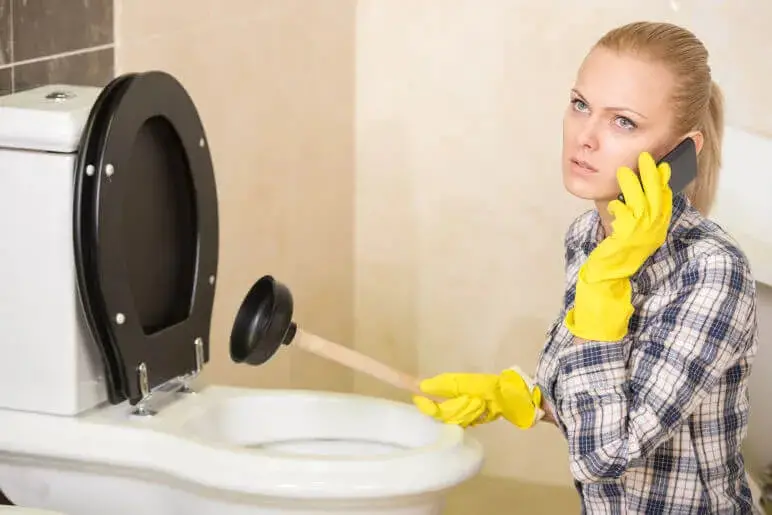
The most common issue any toilet owner will face is a clog. You flush the toilet, and instead of everything swirling and flowing down the drain the water level rises and threatens your floor.
The good news is that there are many solutions. This list is designed to be followed in order. It goes from the method that requires the least amount of resources to the method requiring the most.
This list is also structured in a way that each step will make the next step easier.
Please note that chemical cleaners are not recommended for toilets.
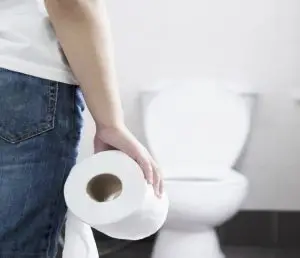 The easiest thing to do is to wait. Many clogs will dissolve slowly over time, meaning the longer you wait the smaller the clog will get.
The easiest thing to do is to wait. Many clogs will dissolve slowly over time, meaning the longer you wait the smaller the clog will get.
When you wait and attempt to flush again, the extra pressure on a smaller clog may dislodge the clog and you will be in the clear.
Watch the level of water in the toilet. If the water level is high don’t attempt to flush again. Doing so will cause water to spill over the rim of the bowl and onto your floor.
Pouring hot water into your toilet in addition to waiting may speed up the breaking down of the clog. Make sure the water is not boiling because boiling water can damage plastic pipes.
Heat about one gallon of water. If there is room pour it into the bowl. Wait to see if the water level begins to go down.
If after 15 minutes the water level has begun to lower, attempt to flush the toilet.
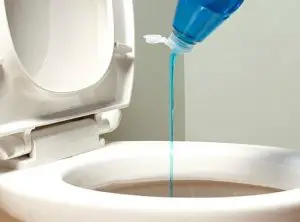 Dish soap or laundry detergent can also speed up the breakdown of a clog. Simply pour a half cup of soap into the toilet bowl and wait for a bit.
Dish soap or laundry detergent can also speed up the breakdown of a clog. Simply pour a half cup of soap into the toilet bowl and wait for a bit.
If you don’t want to use soap use a mixture of Baking Soda and Vinegar. Start by pouring about one-half cup of baking soda into the toilet bowl. Wait a few minutes for the soda to disperse.
Then pour about two cups of white vinegar into the bowl. It will fizz quite a bit and hopefully break down the clog.
This can be done in addition to the hot water, and unlike chemical drain cleaners does not pose any risk to your pipes. Once the water level drops in the bowl, flush the toilet.
Plungers work in both directions. They can push water down the pipe to break up the clog, and in the other direction create a lot of suction to try and pull the clog back to the surface.
That means the most important thing is maintaining a good seal around the outside of the plunger.
To properly use a toilet plunger, first slowly lower it into the water and allow the end to drop into the drain hole. Press firmly until the edges of the plunger make a good seal.
Press down quickly but in a controlled way. You want to shoot the water down the drain.
When the plunger is fully depressed, quickly pull up on it. Try your best to keep the plunger submerged and under control so that water does not splash everywhere.
You will know you are successful when the water begins to rapidly drain. Spray the plunger down with cleaner and rinse it off in a shower or large sink.
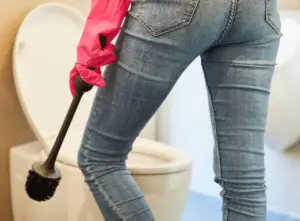 A wet vac can be used to suck out the clog. Wrap a rag around the end of the hose so it seals on the drain and suck the water out. Hopefully you will suck the clog out as well.
A wet vac can be used to suck out the clog. Wrap a rag around the end of the hose so it seals on the drain and suck the water out. Hopefully you will suck the clog out as well.
Be sure to wear gloves and clean the vacuum thuroughly before storing.
A snake is a long metal spring that you can feed down the drain and dislodge the clog. If the clog is made up of material that is not water-soluble a snake may be your only option.
Snakes can be either powered or manual. Make sure to use a snake meant for toilets to avoid damaging the ceramic coating.
Manual Snake Operation
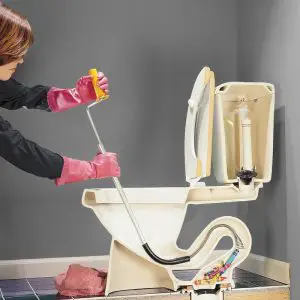 The most affordable snakes are manual snakes that you operate by hand. Wearing gloves you slowly push the snake into the drain until you feel it stop.
The most affordable snakes are manual snakes that you operate by hand. Wearing gloves you slowly push the snake into the drain until you feel it stop.
Twist the snake around to dislodge or dismantle the clog. It can take some time working at it to clear the drain. Some manual snakes have handles that make turning and twisting easier.
Make sure to clean off the snake after use using a spray cleaner and rinsing with water.
Powered Snake Operation
More expensive powered snakes use a motor to spin the snake as you feed it into the drain. Spin forward to help feed the snake down the drain and chew up the clog. Reverse the direction to help the snake retract and coil back up.
Make sure to rinse off the metal part of the snake. Spray and wipe down the motor. Dry the unit before storing.
If you do not have access to a snake, you can use a stiff wire to achieve the same result.
A coat hanger or length of electrical wire can be straightened and pushed slowly down the drain. Most toilet clogs happen near the surface, so around two feet of length is fine.
It will take a lot of twisting and slow, even pressure to make the wire bend around the pipes. Jabbing and twisting at the blockage may destroy the clog or dislodge it.
Like with any other method staying clean is important. Use gloves with your make-shift tool. Throwing the tool away is likely better than attempting to clean it.
If all else fails, you may have a more serious issue than a clogged toilet. The clog may be deep in your system or made of a very resilient material, or it may be an issue with the pipes themselves.
It is important to call an expert when nothing else works. Continuing to try over and over again with makeshift tools can damage pipes and cause even more issues in the future.
Plumbers have tools that are specially made just for clearing clogs and inspecting pipes. It is hard to overstate the value of experience when it comes to protecting your home.
A clogged toilet is an inconvenience that no one needs. Hopefully using this list, and perhaps a little ingenuity, this is an inconvenience you can overcome in short order.
Just remember to keep things clean and don’t flush the toilet when there is a risk of overflowing.